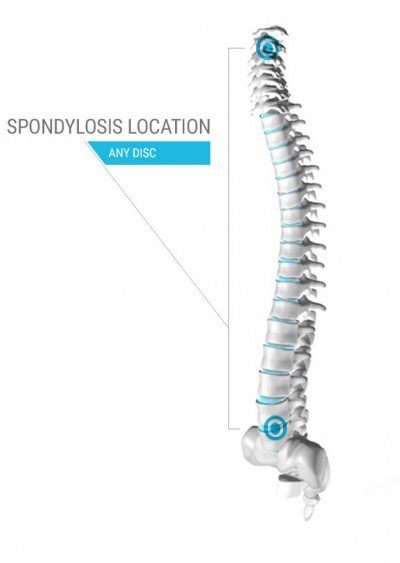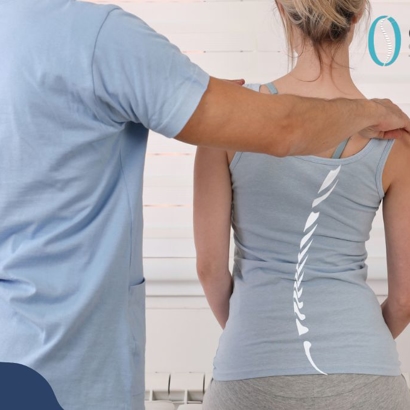
Spondylosis Treatment in Tampa
Spondylosis is a broad medical term used to describe back pain generally caused by wear and tear during the body’s aging process. People suffering from Spondylosis have symptoms ranging from spinal neck pain to joint pain to bone pain.
Most often, Spondylosis is caused by spinal osteoarthritis or degenerative disc disease, but it can be used to describe any manner of spinal degeneration.
Call (727) 300-2537 or contact us online today to schedule an appointment and learn more about spondylosis treatment in Tampa.

What Are the Symptoms of Spondylosis?
The physical symptoms of Spondylosis include the following:
- Back Pain
- Neck Pain
- Joint Pain
- Weakness
- Osteoarthritis
- Lumbar Spine Pain
- Tingling
- Numbness
- Loss/Restriction of Motion
What Causes Spondylosis?
Spondylosis is most often caused by the natural aging process. Although spondylosis a broad term used for back pain caused by wear and tear, specialists most commonly use it to describe osteoarthritis. Spondylosis is caused when discs, muscles, or cartilage deteriorate naturally over time.
This can result in:
- Pain
- Stiffness
- Weakness
- And other symptoms
While natural degeneration is the most likely cause for Spondylosis, people who are overweight, genetically predisposed or have had a history of spine injuries, may be at a higher risk.
How is Spondylosis Diagnosed?
Your doctor will schedule a physical exam and history report as the first step to determining if you suffer from Spondylosis. X-rays, MRIs and CT scans are generally scheduled as a follow up to pinpoint specific causes of your pain from Spondylosis.
How is Spondylosis Treated?
Most patients with Spondylosis can be treated non-surgically through conservative care. The patients must be educated to understand the goal of therapy and have realistic expectations.
Treatment begins with the simplest mode of therapy, such as temporary limitations of physical activities and non steroidal anti-inflammatory drugs (nsaids). If no improvement occurs over a 3-6 week period, a change in the type of Nsaid or a trial of epidural steroid injections may be considered. Bracing may also be an option.
Physical therapy has variable affects. Patients who do not respond to conservative treatments, or whose Spondylosis is debilitating may be candidates for surgery. Talk to your surgeon about what option is right for you.
Frequently Asked Questions
Is surgery always necessary for spondylosis?
No, surgery is usually a last resort. Most cases of spondylosis can be managed with conservative treatments like physical therapy, medication, and lifestyle modifications.
Can spondylosis cause nerve damage?
Yes, in severe cases, spondylosis can compress nerves, leading to pain, numbness, tingling, or weakness in the arms or legs.
Can spondylosis affect younger people?
While spondylosis is more common in older adults, it can affect younger people, especially those with certain risk factors like trauma or repetitive strain injuries.
Can stress worsen spondylosis?
Yes, stress can exacerbate spondylosis symptoms by tightening muscles and increasing pain.
Can chiropractic care help with spondylosis?
Chiropractic care may help alleviate pain and improve spinal function in some cases. However, it's important to consult with a healthcare professional before starting any new treatment.
The Latest In Orthopedics
-
 The Case for Epidural Steroid Injections
The Case for Epidural Steroid InjectionsDiscover Relief with Epidural Steroid Injections Living with chronic spinal pain can be exhausting, impacting every ...
Read More -
 Innovative Treatments for Back Pain: Exploring the Latest Advances in Spine Care
Innovative Treatments for Back Pain: Exploring the Latest Advances in Spine CareInnovations in Back Pain Treatment for a Healthier Future Dealing with back pain can take a toll on every aspect of your ...
Read More -
 What Is Spinal Cord Stimulation?
What Is Spinal Cord Stimulation?Spinal cord stimulation (SCS) is a cutting-edge technique that leverages electrical impulses to mitigate chronic pain. ...
Read More -
Understanding Workers' Compensation for Spine Injuries: A Guide for Employees
If you've suffered a spine injury on the job, workers' compensation could be a vital lifeline. This government-mandated ...
Read More


.2408222022228.png)